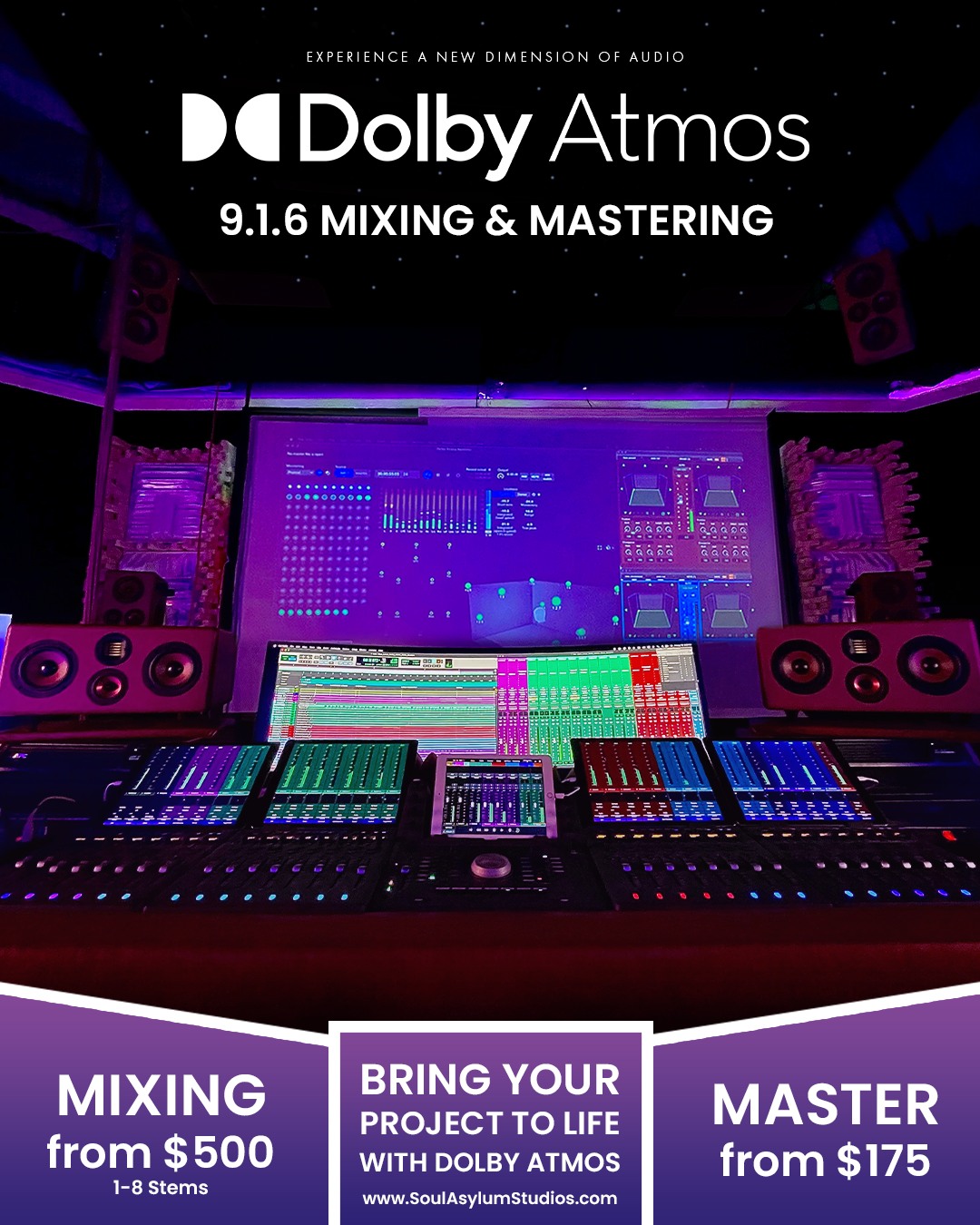Audio plays a crucial role in creating an entirely immersive experience in the entertainment industry. Excellent sound takes us to another world and makes us feel like we are a part of the action when we watch movies, play video games, listen to music, or engage in virtual reality.
Surround sound technology has been at the forefront of the audio technology revolution since its inception and has advanced significantly since then. The sound achieved a sense of depth and directionality through two speakers in the early mono and stereo systems. However, the advent of 5.1 surround sound systems marked a considerable advancement for the sector. Regarding audio technology, Dolby Atmos is a game-changer into itself.
(Also Read More – Mixing Music In Dolby Atmos – Everything You Need To Know)
What is Dolby Atmos?
The Dolby Atmos technology, which denotes a noteworthy advancement in sound, was introduced in 2012. As such, the audio experience is taken to a whole new level.
Unlike traditional channel-based systems like 5.1 or 7.1, which allocate sounds to specific speakers as generated, Dolby Atmos is an object-based system. As a result, sound designers may now precisely place sound as discrete objects inside a three-dimensional space rather than being limited to working with channels. They can arbitrarily reposition sounds, including those overhead, to produce a three-dimensional soundstage.
Dolby Atmos technology produces a more dynamic and lifelike audio experience by allowing each sound to be precisely placed and manipulated independently in real-time.
For a moment, visualize a scene in a movie where a helicopter hovers directly overhead. Conventional surround sound consists of the sound propagating throughout the room from speaker to speaker. However, the sound of the helicopter is converted into an audio object in Dolby Atmos, allowing the sound designer to move it smoothly and uninterruptedly around the whole listening space, including above and beyond the audience. This adds another level of reality to the experience for the spectator.
One of the key components of the format, height channels, are utilized by Dolby Atmos. Conversely, 5.1 systems are limited to horizontal sound placement, while Dolby Atmos features upward-firing speakers that reflect sound off the ceiling or mounted in the ceiling. This makes it feasible to produce noises from above, intensifying the feeling of being right in the thick of the thrilling action.
Unquestionably, Dolby Atmos has revolutionized how sound is experienced in our entertainment industry. By liberating audio from restrictions based on channels and introducing the idea of audio objects, it provides a level of immersion and realism that is truly astounding.
( DOLBY ATMOS Unwrapped: A Journey Along Spatial Audio Excellence )
Dolby Atmos Rendering:

The process of converting blended audio content with object-based metadata into the final audio output that can be played on a specific audio system is known as rendering. In Dolby Atmos, this procedure is called rendering.
The following are some of the most crucial stages in the Dolby Atmos rendering process:
- Audio object-based mixing:
Unlike the traditional channel-based mixing method, Dolby Atmos uses an object-based strategy to blend audio information. One way to avoid assigning specific sounds to predefined channels is to create audio objects representing many sound sources, such as rain, footsteps, or passing cars. Next, the exact location and motion of these audio objects inside the sound field are determined and placed in a virtual three-dimensional space.
- Metadata embedding:
It adds extra information to audio objects to determine their movements and physical placements in the three-dimensional sound domain. To deliver an immersive audio experience, this metadata ensures that the playback system is aware of the precise position and mechanism by which to construct each audio object.
- Playback and decoding:
The playback system maps the audio objects to the speakers most suited for processing them and decodes the metadata provided in the audio source. This can be an AV receiver that supports Dolby Atmos or a soundbar. As a result, this ensures that sounds are placed accurately in the three-dimensional space surrounding the listener, creating a realistic and immersive audio experience.
- Making a rendering for a given speaker configuration:
The playback system’s channel and speaker configurations are considered while rendering for Dolby Atmos. Dolby Atmos works with various speaker configurations in addition to traditional surround sound speakers. These arrangements can have the speakers above the audience or higher up the hierarchy.
Challenges faced during the Dolby Atmos implementation
For Dolby Atmos to function, more speakers are needed; these speakers could be ceiling-hung speakers or speakers pointed upward for height channels. The proper positioning of the speakers is crucial for creating the desired three-dimensional audio experience. For older installations lacking the capability to function with Dolby Atmos, upgrading to enable this technology may come with costs. This can necessitate investing in new speakers, amplifiers, or audiovisual receivers that can handle and output Dolby Atmos information.
Not all content is available in Dolby Atmos format, despite a continuous increase in the number of films, TV series, and video games mixed in this format. As a result, the selection of Dolby Atmos-compatible content may initially be limited, especially for older or more specialist movies. However, more content is expected to be released in the Dolby Atmos format as the technology continues to gain popularity.
(Dolby Atmos Music – Experience Music Like Never Before)
Dolby Atmos transforming technologies:
Dolby Atmos’ cutting-edge technology has permanently changed the audio entertainment world. Thanks to this immersive sound format, which immerses viewers in a three-dimensional audio world like never before, audiences may now experience a level of aural realism that was previously unthinkable. On the other side, these revolutionary technologies come with a special set of challenges. Ensuring that the captivating effects of Dolby Atmos are accurately communicated to viewers worldwide requires the implementation of quality control (QC).
To preserve the highest quality of audio and ensure that users will always have an engaging and consistent experience, extensive testing and monitoring must be carried out in accordance with strict guidelines. To fully utilize this remarkable audio technology and to keep expanding the realm of auditory immersion, it is imperative to allocate resources towards robust quality control techniques. This is a result of the continued adoption of Dolby Atmos by audio specialists and content makers.
If we recognize and satisfy Dolby Atmos’ quality control requirements, we can all begin the path towards a future where audio experiences exceed all expectations, creating new benchmarks for the storytelling genre and enthralling viewers in a way never seen before.


Leave a Reply